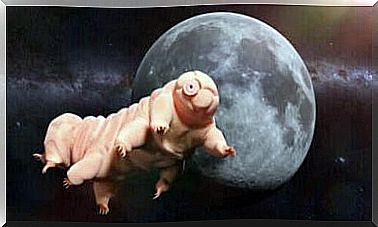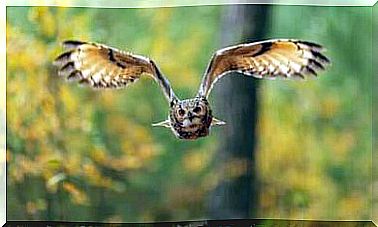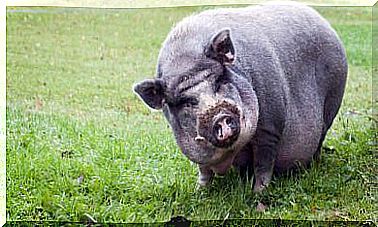Himalayan Cat: Cross Between Persian And Siamese Cat
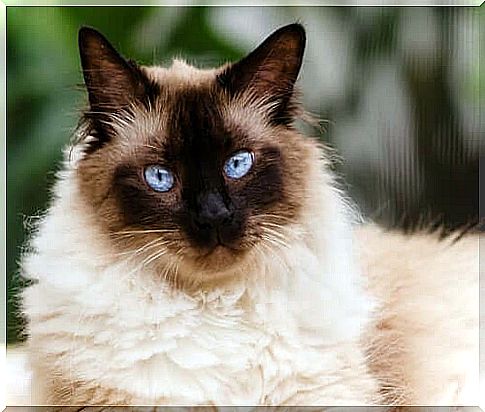
The Himalayan stands out for its unique beauty, which harmoniously combines the characteristic features of the Persian and Siamese. Aside from its looks, this cat is becoming increasingly popular due to its balanced temperament and exceptional adaptability.
But before deciding to adopt a cat of this breed, it is important to understand its characteristics and the care necessary to maintain its optimal health. Therefore , in the following we will summarize everything you need to know about the Himalayan cat.
Origin of the Himalayan
The appearance of the Himalayans is not deceptive and is also proof of their ancestry. These velvet paws are bred from selective crosses between Persian and Siamese cats, two of the most popular cat breeds in the world.
The first specimens were born in Sweden in the 1930s, although the breed’s origin is commonly attributed to England or the United States.
It is believed that breeders wanted to develop a new breed that would retain the character and physical shape of the Persian cat, but with the pattern and typical blue eyes of the Siamese cat.
For many years the cat associations did not recognize the Himalayan as a breed. The first official recognition takes place in England in 1957 under the name Longhaired Colorpoint. In 1957, the Himalayan was also recognized as a breed in the United States, where it gained tremendous popularity.
It must be emphasized that the name of the breed does not refer to the famous Himalayan mountains or the origin of the cat. In reality, it goes back to the similar beauty of this cat to the Himalayan rabbit.
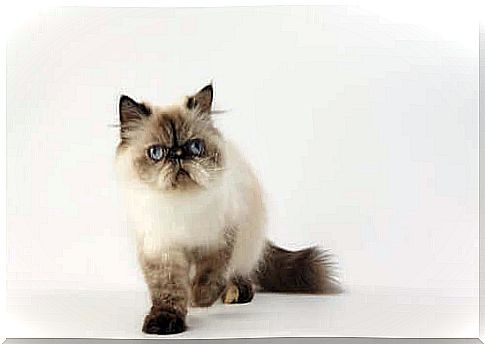
Physical characteristics
The Himalayan clearly retains the morphological features characteristic of Persian cats. It has a medium-sized, robust and compact body with relatively short and strong legs. The head is round and strong, while the face appears completely flat due to the flat nose.
The long, lush and silky fur of the Himalayan cat also comes from the Persian cat. However, it has the typical pattern with colored tips of the Siamese cat, from which it has also inherited the beautiful blue eyes and the unique look.
The color of the fur can vary slightly, but always has the typical Point style. The most common colors are: blue, chocolate, red, seal brown, purple or tortie.
Temperament and character
The Himalayan cat is characterized by its balanced temperament, calm and intelligence. As a rule, she has a very special relationship with her family, with whom she is loving, entertaining and very sociable.
However, in the presence of unknown people or animals, she can be reluctant or shy. But with correct socialization, she will be able to develop positive relationships with other people and stimuli in her surroundings.
The Himalayan is also characterized by its good ability to learn, which makes it easier (and enormously!) To raise it. With her family, she enjoys new games and activities that arouse her curiosity and stimulate her senses, especially her extraordinary hunting instinct.
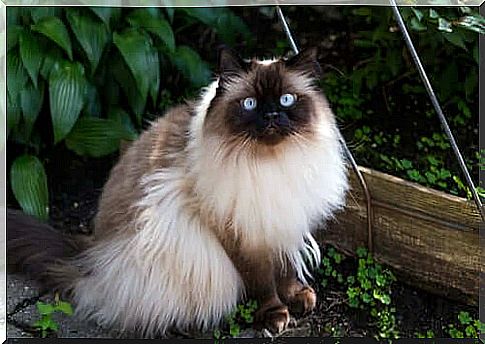
Caring for the Himalayan cat
The Himalayan must be brushed daily to ensure optimal coat care. It also prevents the accumulation of loose hair and dirt and the formation of hairballs in the intestine.
It is also recommended to bathe them at least once a month to keep their fur clean and shiny.
Oral hygiene is also crucial to prevent tartar formation and thus dental diseases. Ideally, you should brush your cat’s teeth at least twice a week. This will prevent food from building up between your teeth and gums.
Establishing their area is essential so that your cat can use its energy in a positive way, move around, and stimulate its mind well, which prevents behavior problems.
In addition, it is important to provide her with suitable scratching posts so that she can wear and sharpen her claws naturally.
Himalayan health
The Himalayan is a strong and resilient cat who, with proper care, is unlikely to get sick. However, she can be affected by some hereditary or general feline diseases, such as:
- Hairballs in the digestive tract
- Eye ailments
- Jaw and facial discomfort
- Urinary tract infections and kidney problems
The life expectancy of the Himalayan cat is between 12 and 15 years. It can also be higher with appropriate health care.






